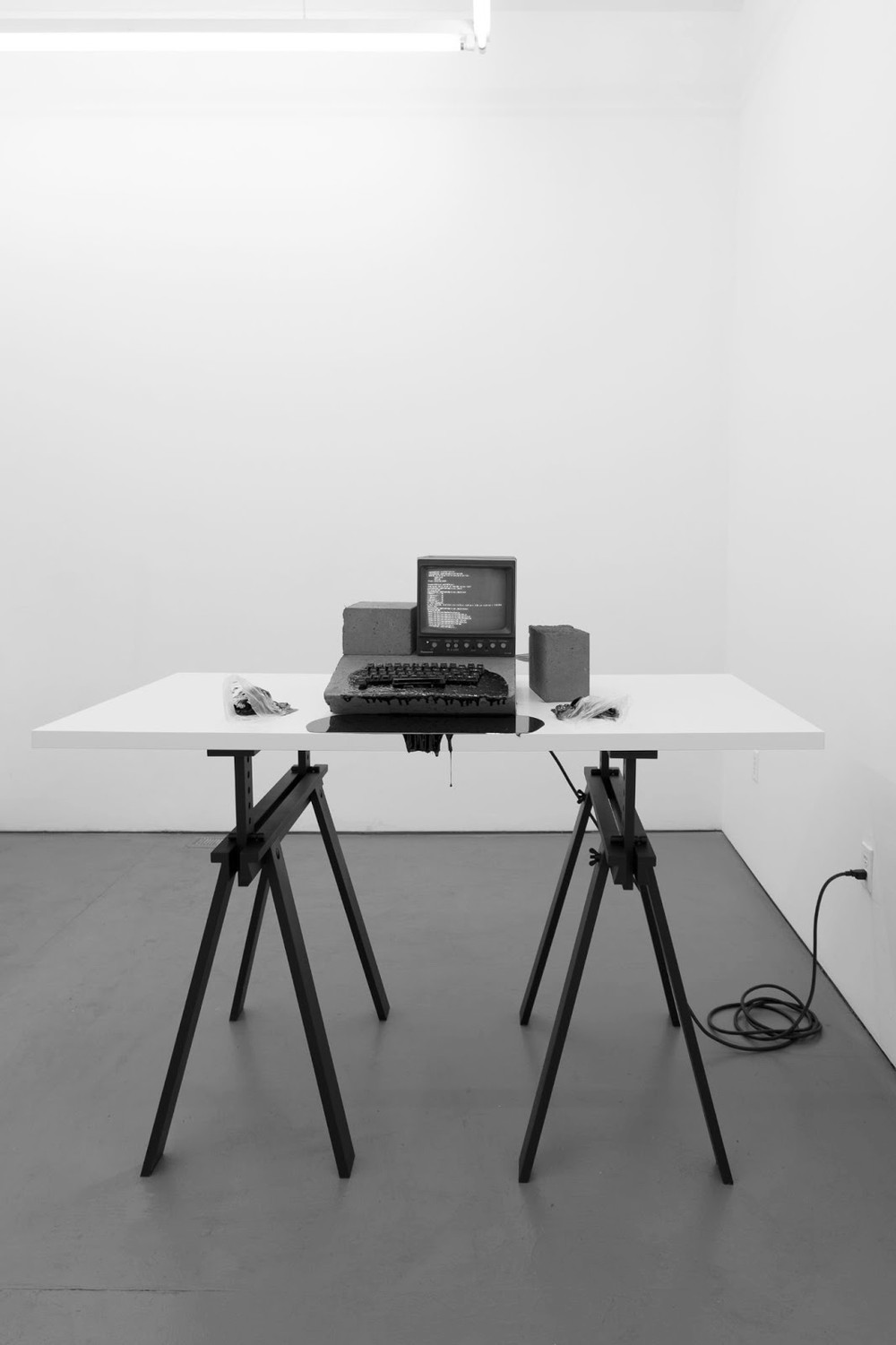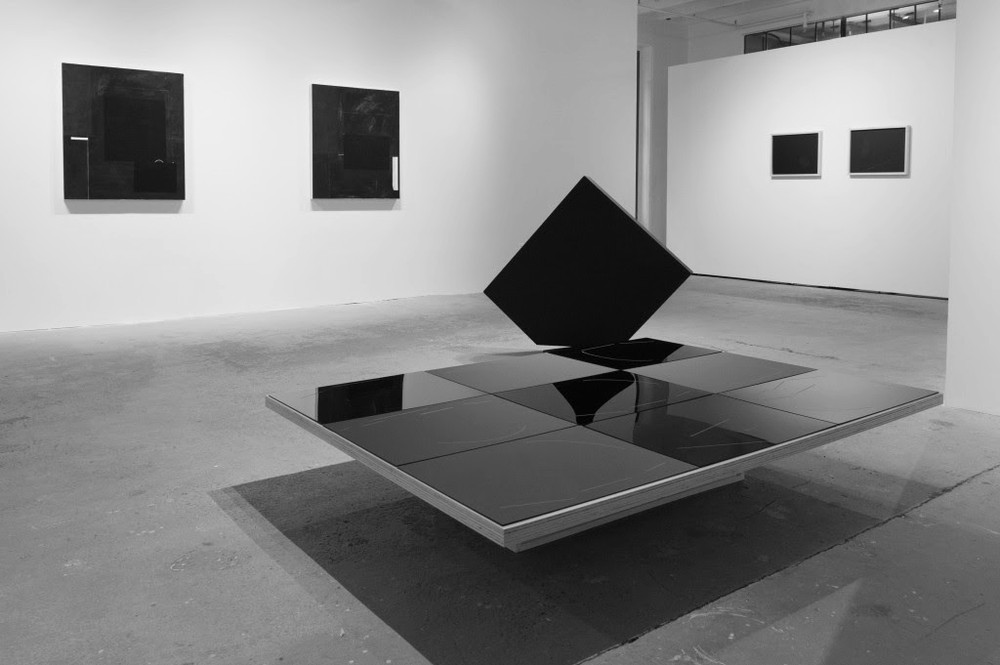What Is Eyebeam?
Eyebeam serves as a powerhouse for artists’ ideas by providing financial support, network, mentorship, and visibility to today's leading artists. Acting as a globally distributed catalyst, we help ideas actualize into projects that subvert the status quo and serve as radical change-agents.
This unique, values-driven approach to centering artists’ ideas is predicated on the belief that artists’ critical engagement with digital tools and their visions of how technology can be are vital in the invention and design of a more hopeful shared future. Furthermore, Eyebeam holds that artists’ ideas should support the design of policy, thereby shaping radical, systemic change that shifts the imbalance of power and contributes to a more just and sustainable world.


“[Eyebeam] is a space for artists working in and around technology....We’re all thinking around ideas of inclusion and biases and bringing people into the fold and making the fold wider.” -Stephanie Dinkins, 2018 Resident
Both the arts and technology sectors have inherent biases that have perpetuated inequitable access and exclusionary practices, which we are committed to interrupting by amplifying diverse, justice-driven, and visionary practitioners. Some of these practitioners include alumni Torkwase Dyson (b. 1973), who researched and created a new series of paintings and sculptures for a solo exhibition of work entitled Unkeeping (2016), which spanned modular architecture, data visualization, and black spatial matters; and Shannon Finnegan (b. 1989), an artist who investigated alt-text as a poetic form in 2019, as part of their wider practice that focuses on disability culture and access. We invite you to read a few examples of visionary artists and their projects that were born at Eyebeam below.
Artists

American Artist, 2018
American Artist is a rapidly successful multidisciplinary artist who describes their work as “thought experiments that mine the history of technology, race, and knowledge production.” They legally changed their name in 2013 in an effort to begin to reframe the definition of an American artist. During their 2018 residency at Eyebeam, American expanded their research into the development of the Graphical User Interface (GUI), resulting in the 2018 exhibition at Housing Gallery, Black Gooey Universe . The exhibition explored antiblackness found in commodified technology, such as iPhones. They posited “black gooey as antithetical to the values of the white screen” – which has become the neutral factory setting of devices.
Recent work ranges from the solo exhibition at the Queens Museum My Blue Window , an immersive multimedia installation that explores anti-Blackness as it operates within technological systems such as predictive policing technology, to Looted , on online commission for the Whitney Museum of American Art that temporarily replaces all images of artwork with textures of plywood, symbolically boarding up the Museum’s website. Their work has been featured in the New York Times, Artforum, and Huffington Post. Artist is a 2021 Regents’ Lecturer at UCLA and teaches critical theory at the School for Poetic Computation.
Cory Arcangel, Resident 2002-2006
Cory Arcangel is widely regarded as a leading digital artist, whose signature playful and highly technical approach manipulates and appropriates popular technology to explore its speed of obsolescence. In 2002 Arcangel debuted his seminal work Super Mario Clouds for which he “hacked” into the game’s code to erase everything aside from the video game’s continuous scrolling clouds. Now included in the permanent collection of the Whitney Museum of American Art, the work demonstrates Cory’s “rigorous conceptual approach to computer hard- and software as well as a refusal to participate in contemporary culture’s lightning-fast cycle of technological turnover.”
Following Clouds, Cory Arcangel came to Eyebeam, where he was a resident for four years between 2002-2006. During this time, Eyebeam supported the development of his infamous work Pizza Party , a hack of Domino’s Pizza’s website that offered a text-based software package for users to order pizza (or a pizza party) through code using only a few keystrokes to indicate toppings and quantities. The software was downloaded by thousands of people within days, and in true Eyebeam fashion lives on as an open-source software distributed under the GNU General Public License.

Torkwase Dyson, Resident 2015
Torkwase Dyson is a painter who is not bound by a single medium in her expansive and critical artistic explorations of ecology, infrastructure, architecture, and the negotiation of space by Black and Brown bodies. Dyson employs abstraction to create visual and material systems that uncover historical and contemporary strategies for Black spatial liberation, and new potentials for more sustainable, livable geographies.
Dyson was awarded a residency at Eyebeam in 2015, during which she produced multiple bodies of work that were included in a major solo exhibition organized by Eyebeam titled Unkeeping (2016). The exhibition was groundbreaking as a thesis on the potential for painting and abstraction as a form of data visualization, in this instance invoking the devastating spatial history of slavery, and the ongoing relationship between architecture and systemic racism. Following her time at Eyebeam, Torkwase joined the roster of artists at Pace Gallery in NYC, and her work has been widely exhibited internationally from the Museum of Modern Art to the Sharjah Biennial.
Tahir Hemphill, Resident 2010-16
Tahir Hemphill is a creative technologist and radical archivist who defines his artistic trajectory as a “fundamental affinity between Hip-hop culture and hacking.” His work takes shape as highly researched, deep investigations into systems of collaborative knowledge production, and forges intricate data-driven analysis from connecting hip hop lyrics and art history to Spotify music streams and real estate.
Tahir was a resident at Eyebeam from 2010-2016, and in that time developed the Rap Research Lab , a transformative long-term initiative that engages youth, radical archivists, artists, educators, narrative designers, software developers, and researchers in exploring hip-hop as a framework to develop new ways for people to engage with data and culture. The project stemmed from Hemphill’s Rap Almanac, a searchable database built from the lyrics of over 50,000 hip-hop songs, which generates reports on searched words, phrases, and ideas.

Lauren Lee McCarthy, Resident 2013, 2020
Lauren Lee McCarthy is an artist examining social relationships in the midst of surveillance, automation, and algorithmic living. She is also the creator of p5.js, an open-source art and education platform that prioritizes access and diversity in learning to code, with over 1.5 million users. McCarthy’s prolific practice includes several intimately provocative works such as LAUREN , where the artist attempts to become a human version of Amazon Alexa in an effort to contest AI’s ability to understand and anticipate a person’s needs, and Follower , an app-based service that provides participants with a real-life follower for a randomly selected day.
During her 2013 Eyebeam residency, McCarthy worked with fellow Eyebeam alum Kyle McDonald to create pplkpr, an app that tracks, analyzes, and auto-manages your relationships. The work was designed to explore the implications of quantified living for relationships and asks: Who owns the data created between two people, and what if it is captured and used?
Since her residency at Eyebeam, Lauren has gone on to much critical acclaim, receiving awards and fellowships from United States Artists, Sundance New Frontier, Creative Capital, the Knight Foundation, and more.
Carolee Schneemann, Resident 2003
Carolee Schneemann (1939-2019) was a seminal experimental multi-media artist, memorialized in the New York Times as “a feminist visionary and one of the most influential artists of the late 20th century.” She was revered for pushing concepts of painting beyond the canvas in a traditionally male-dominated field into physically charged performances that radically centered the artist’s body as an integral material amongst objects such as mirror shards, meat, and even live snakes.
During her time at Eyebeam as an artist in residence in 2003, Schneeman produced Devour, a powerful multi-channel video installation that confronts the onslaught of contemporary media and addictive consumption through contrasting speeding images of disaster and domestic intimacy. The artist refers to the piece as being about “menace,” that “disturbs and questions the tenor of normality.” The work has since been shown internationally, most recently in Schneemann’s career retrospective Kinetic Painting at MoMA PS1.